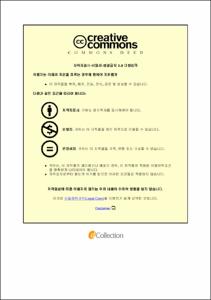Ulsan Univ. Repository
Thesis
General Graduate School
Mechanical & Automotive Engineering
1. Theses (Master)
Optimization of Triboelectric Energy Harvesting from Falling Water Droplet onto Wrinkled Polydimethylsiloxane-Reduced Graphene Oxide Nanocomposite Surface
- Abstract
- This thesis investigates the triboelectric energy harvesting phenomenon of falling water droplets on a novel nanocomposite surface, chemically synthesized from reduced graphene oxide (rGO) and polydimethylsiloxane (PDMS) polymer. Filler amount variations in pristine polymer matrix and their effect on the resultant triboelectric films have been investigated thoroughly while vertically falling consecutive water droplets contact and slide over the as synthesized triboelectric nanocomposite film surfaces. Based on the output performance, proper optimization has been made and explained theoretically with respect to the effect of filler incorporation
Six nanocomposite samples have been prepared by varying filler’s concentration in polymer matrix to optimize the triboelectric performance. Optimization has been explained based on determination of several parameters e.g. rGO flakes’ thickness, water contact angles, dielectric properties, and nano-characterization of the pristine and nanocomposite film samples. Several nano-characterization technique includes Field Emission Scanning Electron Microscopy (FE-SEM) for the analysis of surface and cross-sectional morphologies, Energy-Dispersive X-ray (EDX) spectroscopy for quantitative elemental analysis, and confocal Raman spectroscopy have been performed to analyze the as prepared samples for critical optimization.
In addition, thickness effect of as prepared films has also been studied by varying the thickness. After analyzing outputs of a single electrode mode triboelectric nanogenerator (SEM-TENG) based on Pristine PDMS and nanocomposite samples, it has been found that thinner films perform better in comparison to apparently thicker films. Moreover, it has been also investigated that lower quantity of filler inclusion can impart the best desired triboelectric properties to resultant nanocomposite matrix than higher amount of filler comprehended matrix. After proper optimization, it has been found that 0.5 mg rGO incorporated PDMS matrix of 141 µm thickness revealed highest output potential difference of ~2V upon contact and separation of water droplet over the nanocomposite film surface. The maximum close circuit current (ISC) value has been obtained ~2 nA from triboelectrification for the same sample.
This work demonstrates a unique way to get a hydrophobic surface and improved dielectric thin triboelectric nanocomposite film simultaneously by optimizing rGO filler inclusion in PDMS matrix, which is able to harvest energy from a tiny moving water droplet.
- Issued Date
- 2019
- Awarded Date
- 2019-08
- Type
- Dissertation
- Affiliation
- 울산대학교
- Department
- 일반대학원 기계자동차공학과
- Advisor
- Kyoung Kwan Ahn
- Degree
- Master
- Publisher
- 울산대학교 일반대학원 기계자동차공학과
- Language
- eng
- Rights
- 울산대학교 논문은 저작권에 의해 보호받습니다.
- Appears in Collections:
- Mechanical & Automotive Engineering > 1. Theses (Master)
- 파일 목록
-
-
Download
 200000221163.pdf
기타 데이터 / 5.69 MB / Adobe PDF
200000221163.pdf
기타 데이터 / 5.69 MB / Adobe PDF
-
Items in Repository are protected by copyright, with all rights reserved, unless otherwise indicated.